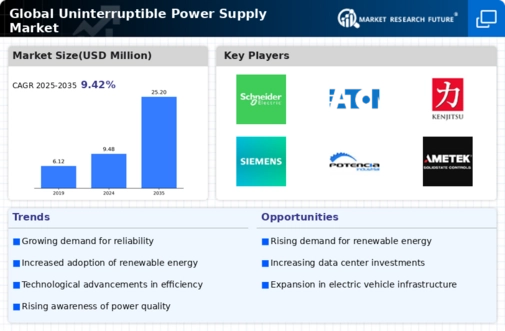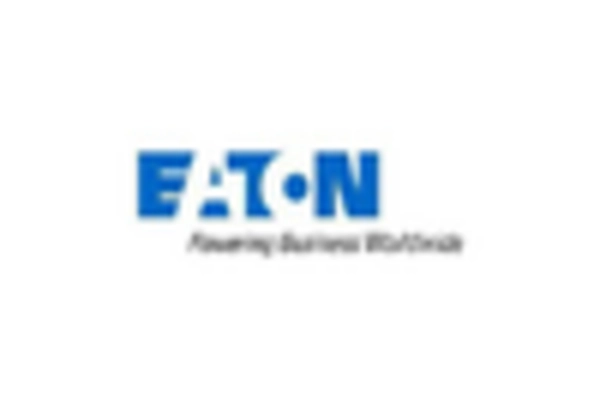Market Share
Uninterruptible Power Supply UPS Market Share Analysis
In recent years, technological progress has prompted companies to invest significantly in delivering highly dependable UPS (Uninterruptible Power Supply) systems equipped with self-diagnostic capabilities. Various commercial sectors, including retail, data centers, and industries, have shown a consistent demand for self-diagnostic UPS systems that shield hardware from damage during power outages. These systems ensure a continuous power supply for appliances or equipment during downtime, allowing them to remain operational even amidst fluctuating input voltage ranges. Self-diagnostic UPS systems encompass various features, such as battery management solutions, remote UPS monitoring, and software and communication solutions.
For instance, remote UPS monitoring applications continuously oversee UPS system performance, providing preemptive warnings about potential issues like declining performance or battery overheating. These warning signs enable technical personnel to proactively address concerns before they escalate into serious outages, thus averting major disruptions.
Moreover, software and communications technologies play a pivotal role in influencing UPS system adoption. As electric networks expand, the communication between UPS hardware and software becomes more sophisticated. This advancement is primarily attributed to significant developments in power management software, which now boasts automatic features like remote notifications via email, SMS, data accumulation for report generation, and trend analysis. These progressive advancements in UPS systems have made them more dependable, accessible, and flexible. They effectively minimize downtime, save time and money, and significantly enhance overall customer satisfaction levels.
These UPS systems with self-diagnostic capabilities mark a significant step forward in ensuring uninterrupted power supply, protecting sensitive hardware from damage, and improving operational efficiency across various industries. As companies increasingly prioritize reliability and efficiency, the demand for such advanced UPS systems is expected to surge, driving further innovation in the UPS market.
The growing reliance on electronic devices and technology across various industries has made uninterrupted power supply a critical necessity. This heightened dependence on technology-driven operations has amplified the significance of UPS systems, especially those equipped with self-diagnostic capabilities. In sectors like data centers, any power disruption could lead to data loss or system crashes, resulting in significant financial losses and operational setbacks. Therefore, self-diagnostic UPS systems have emerged as an essential safeguard against such risks.
The battery management solutions integrated into these UPS systems efficiently manage the battery performance, ensuring their optimal functioning and extending their lifespan. By constantly monitoring battery health, these UPS units prevent sudden power failures and allow for predictive maintenance, ultimately reducing downtime and enhancing system reliability.
Furthermore, the advanced communication and software features embedded within modern UPS systems offer remote monitoring and management. This facilitates proactive measures by enabling real-time alerts, fault detection, and immediate responses to potential issues. Such proactive intervention minimizes the impact of power-related disruptions, ensuring uninterrupted operations and preserving data integrity in critical sectors like healthcare, finance, and telecommunications.
Additionally, the evolution of power management software has revolutionized UPS systems, enabling a higher degree of automation and sophistication in handling power-related contingencies. These smart UPS systems use sophisticated algorithms and analytics to predict potential faults or inefficiencies, allowing for preventive actions to maintain system stability.
As industries increasingly rely on technology-driven processes, the demand for self-diagnostic UPS systems is poised to escalate. This trend is primarily driven by the imperative need to safeguard critical systems and data from power disturbances, ensuring operational continuity, mitigating risks, and maximizing productivity.
The integration of self-diagnostic features in UPS systems not only enhances their reliability but also aligns them with the evolving needs of modern industries. These systems play a crucial role in fortifying infrastructure, reducing vulnerabilities, and supporting the seamless functioning of businesses in an ever-evolving technological landscape.









Leave a Comment